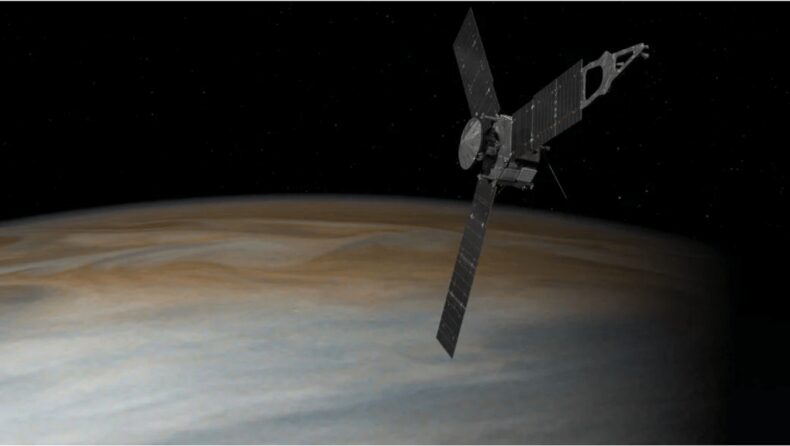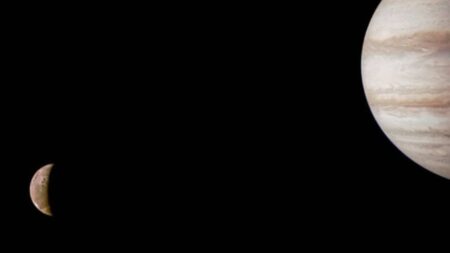The Juno spacecraft flew past Europa in late September, and the images returned show a frozen world like no other. In late September, NASA engineers decided to divert from flying around Jupiter to explore Europa, a unique moon orbiting Jupiter that is thought to have salty oceans beneath its thick crust. On September 29, Juno flew as close as 450 kilometres above the lunar surface.
It returned data days later, and citizen scientists are now revealing the true colours of this icy world, where astronomers hope to find signs of life and conditions conducive to habitability. The images show distinct ridges on the surface as well as terrain near the day-night boundary.
The terrain appears rugged, with pits and troughs, as well as numerous bright and dark ridges and bands stretching across a fractured surface, revealing the tectonic stresses that the moon has endured over millennia. Callanish Crater, which appears as a circular dark feature in the lower right, was also detected by Juno.
Beginning with our Earth flyby in 2013, Juno citizen scientists have been invaluable in processing the numerous images we receive from Juno. Their work provides a perspective that draws on both science and art during each flyby of Jupiter, and now its moons.
They are an important part of our team, paving the way for new discoveries by utilising our images. These latest Europa images do just that, pointing us to surface features that reveal details about how Europa works and what might be lurking both above and below the ice, according to Scott Bolton, Juno’s principal investigator.
Meanwhile, Fernando Garcia Navarro worked on an image that resembles psychedelic rendering, which was previously worked on by fellow citizen scientist Kevin M. Gill.
NASA’s Super Juno
Juno collected the data during a few minutes of flying around Europa at a speed of 23.6 kilometres per second. Nasa used the flyby to take advantage of the moon’s gravitational pull, altering Junos’ trajectory and cutting the time it takes to orbit Jupiter from 43 to 38 days.
The observations around Europa, according to Nasa, will supplement future missions to the Jovian moon. Juno’s Stellar Reference Unit (SRU) captured the image on September 29, 2022, during a flyby when Juno was only 352 kilometres above the surface.
This is thought to be the closest a spacecraft has ever come to Europe in more than 22 years. Previously, NASA’s Galileo spacecraft came within 218 miles (351 kilometres) of the surface.
Europa is the sixth-largest moon in the solar system, slightly smaller than Earth’s moon, according to NASA.
“Launched on August 5, 2011, Juno has blazed a mission beyond its original five-year journey to our solar system’s largest planet, Jupiter. Now in its extended mission, Juno is now an explorer of the full Jovian system, which expands to Jupiter’s outer rings and moons,” NASA wrote on Instagram.
“We haven’t seen Europa’s surface in this level of detail for 20 years,” Phillips said.
Phillips, a planetary geologist at NASA’s Jet Propulsion Laboratory, reached for the Europa globe on her desk and began comparing real-world views to the topography stretched across the plastic orb. The last probe to come this close to Europa was destroyed in 2003, when NASA deliberately sank it into Jupiter’s atmosphere after it ran out of fuel.
Europa could be the best place in the solar system to look for life. Scientists are almost certain that beneath the frozen surface of the Jovian moon is a salty ocean containing more water than all of Earth’s oceans combined. A watery subsurface environment like this could be ideal for small Europan life forms.
Another NASA spacecraft, specifically designed to study Europa, will launch two years from now. The probe will swing past the moon several times, sometimes only 16 miles (25 kilometres) above the surface.
Read more: Attempt to change the path of asteroid has been successful by NASA
Also read:Images of an asteroid hit captured by the NASA













